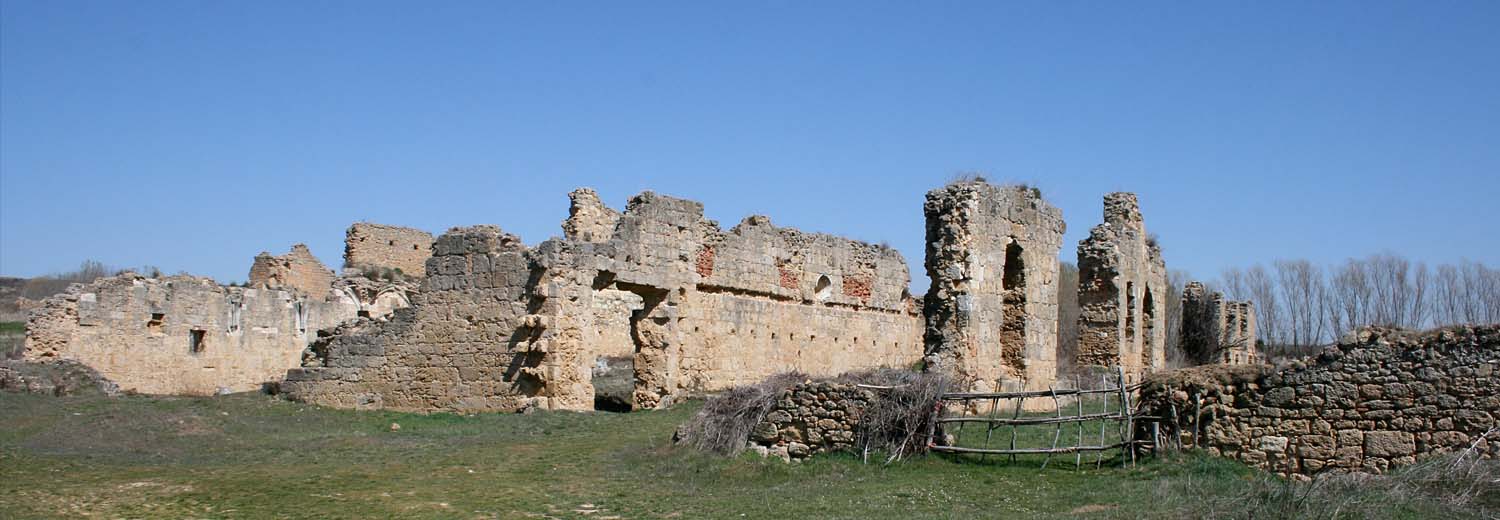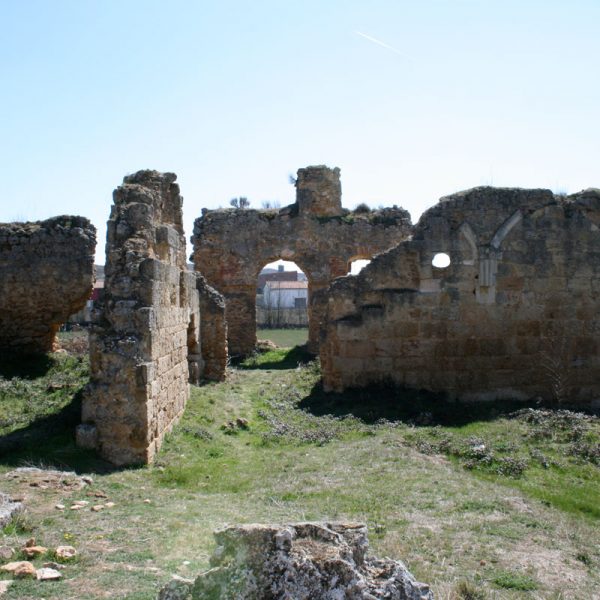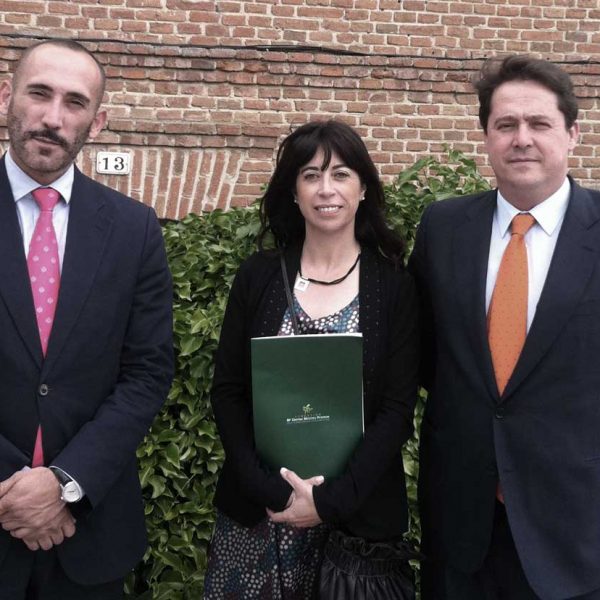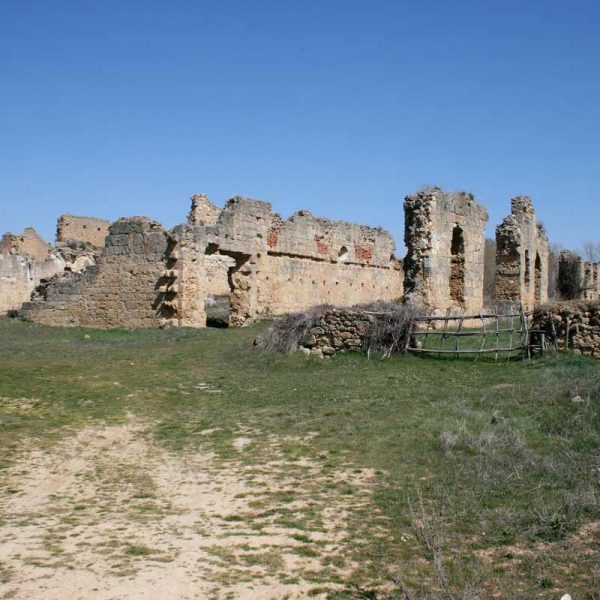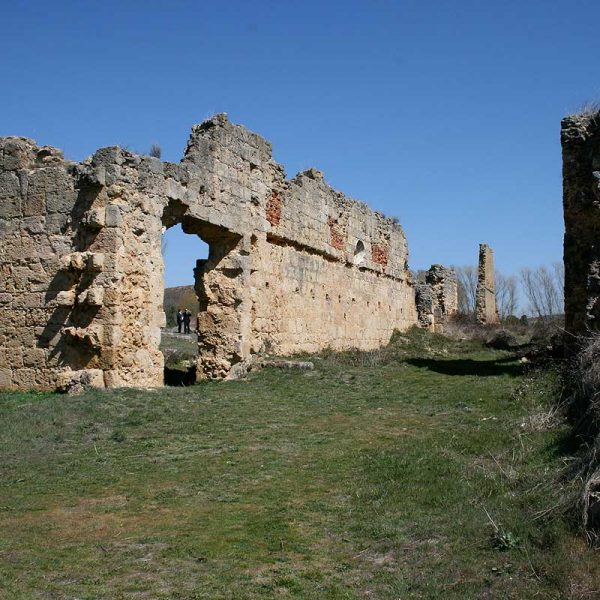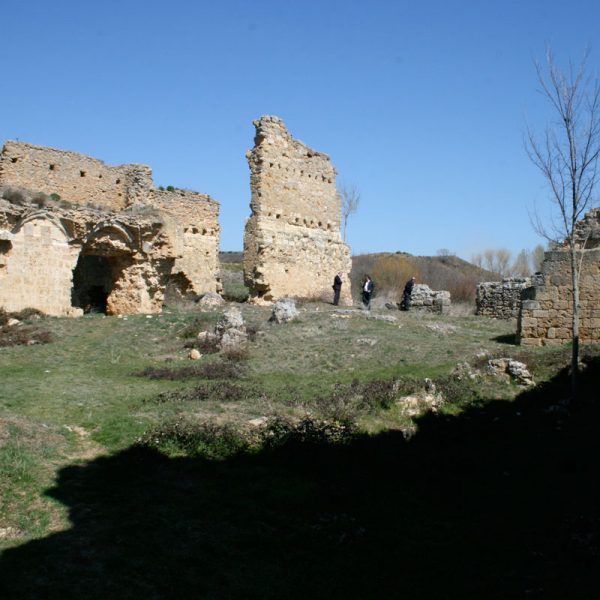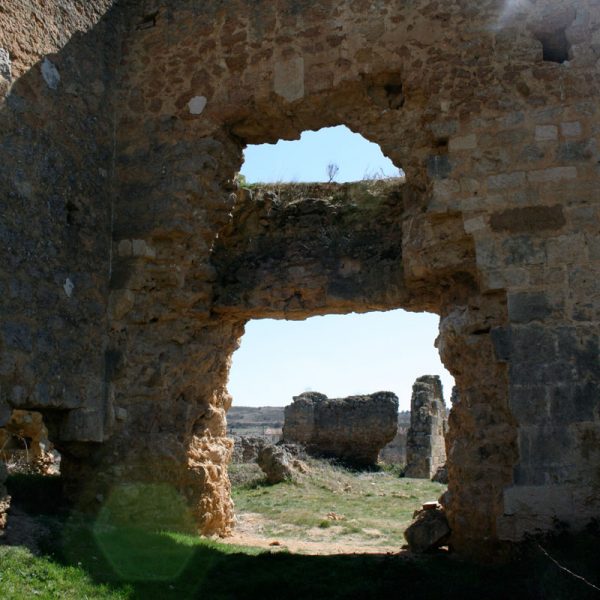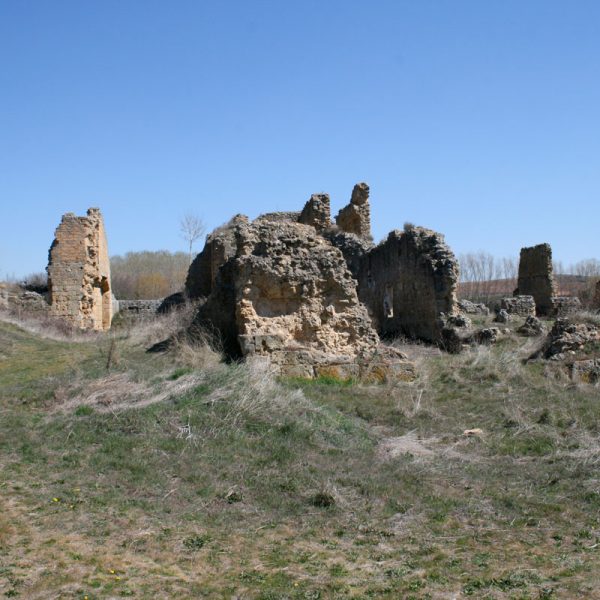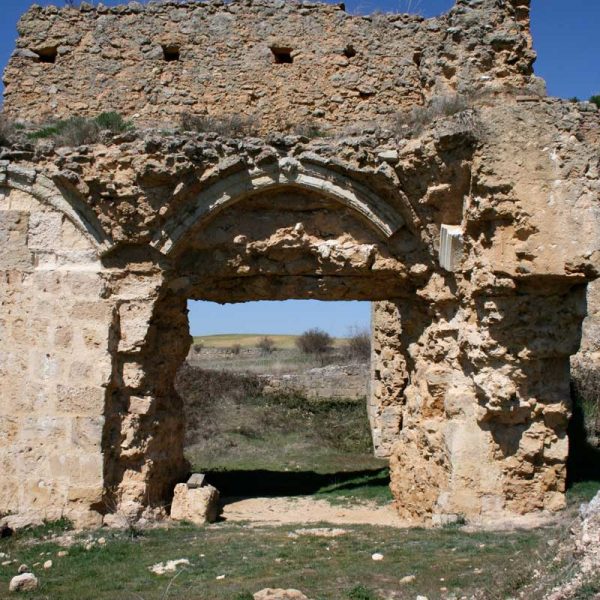STUDY OF THE RUINS OF THE MONASTERY OF SANTA OLAJA DE ESLONZA
SPONSORSHIP AND FINANCING OF THE PROJECT FOR THE SCIENTIFIC, HISTORIC AND ARCHAEOLOGICAL STUDY OF THE RUINS OF THE MONASTERY OF SANTA OLAJA DE ESLONZA
Based on its commitment to the Conservation and Recovery of of Spain’s Historical Heritage, the María Cristina Masaveu Peterson Foundation has undertaken the sponsorship and financing of the Project for the Scientific, Historic and Archaeological Study of the ruins of the Monastery of Santa Olaja de Eslonza in León, which at present corresponds to a portion of the walls, parts of the vaults and the base of the arches.
The project, which includes the fencing and adequate signposting of the Monastery for its future conservation, incorporates the following actions:
– Fencing and signposting of the ruins. Technical safety project.
– Scholarship for the analysis, compilation and study of the building’s history.
– Scholarship for the historical recreation of the different periods in time, graphic development of plans and virtual realities (3D infographs).
– Planning of the archaeological study of the ruins and their possible cultural use in the future after their consolidation.
MONASTERY OF SANTA OLAJA DE ESLONZA
SANTA OLAJA DE ESLONZA, GRADEFES, LEÓN (CASTILE AND LÉÓN, SPAIN)
ASSET OF CULTURAL INTEREST (BIC) · MONUMENT 4,401 M2
The Monastery of San Pedro de Eslonza is an old Benedictine monastery located between the Esla and Porma rivers. In its time it was the second most important monastery in the province, after that of San Benito de Sahagún, and today it is in an advanced state of deterioration.
The monastery’s glorious past can still be felt in its ruins which include: the important 12th Century Romanesque church, a 16th Century plateresque cloister and three Baroque façades in the exterior, a refectory, a kitchen, a fridge, a warehouse, a piped water fountain and a place to desalt fish, among other rooms that demonstrate the remains of a great building. Only the 18th Century façades remain, which were transferred to the city of León, where today they can be seen at the church of Santa María de Renueva, along with endless high quality minor works, which have been shared throughout the region’s towns and villages.
It is worth noting the presence of two prestigious Spanish enlightened, who were strongly linked to Asturias: in 1795 Gaspar Melchor de Jovellanos, who was a trainee for a time at San Pedro de Eslonza, and Father Benito Jerónimo Feijoo.
HISTORY
The Monastery was founded in the year 912 by King García I of León and destroyed by Almanzor in the year 988. It was rebuilt by Princess Urraca de Zamora, daughter of Ferdinand I the Great in 1099.
Doña Urraca appears as the first benefactor, and when she became Queen of Galicia, León and Castile in 1109 she made several donations to the Monastery of Eslonza, as did Alfonso VII, who granted the valley of Eslonza the status of royal property in 1142. The name of the monastery, which was dedicated to Saint Eulalia and Saint Vicent Levita, was changed to Saint Peter the Apostle and Saint Paul.
As a result of deterioration, in the 16th century the building was significantly reformed, furnishing the convent with three Renaissance façades and a spacious cloister. Reconstruction was carried out by Juan de Badajoz “El Mozo” (The Young), and subsequently by Juan López de Rojas and Juan del Ribero, who worked on the cloister. The church was completed by Friar Pedro Martínez de Cardeña, a Benedictine architect, and was consecrated in 1719. The impressive main façade, in the Baroque style, accommodated images of Saint Adrian and Saint Natalie in its lower niches and of Saint Bernard and Saint Benedict in the upper ones, surrounding an image of Saint Peter sat down wearing the Papal Crown. Work continued until the 18th Century.
Mendizábal’s disentailment in 1836 was a hard blow to life at the Monastery of Eslonza. It was sold at a public auction for 40,000 reales, was passed from hand to hand, sold piece by piece, and suffered constant looting, which all led to the loss of its artistic heritage.
In 1931 it was declared a National Historic-Artistic Site.
Conservation of the surviving remains was possible thanks to Don Luis Almarcha Hernández, Bishop of León between 1944 and 1970, who encouraged the construction of the Church of San Juan y San Pedro de Renueva in the capital in the mid-20th Century. The façades of the Monastery of Eslonza and other elements were incorporated into the new construction, thus saving them from inevitable destruction. The new church joined the former parish church in Renueva, dedicated to Saint John, and the former Benedictine monastery in Eslonza, dedicated to Saint Peter.

